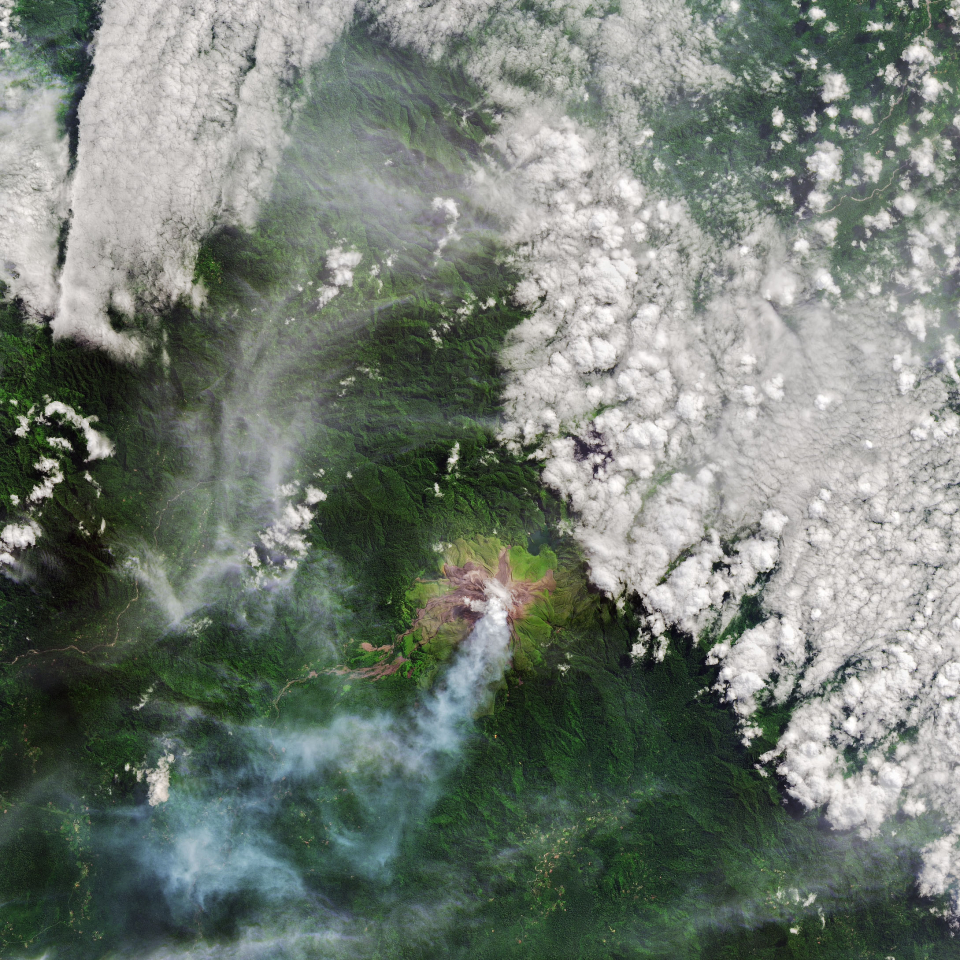Gepubliceerd op 2 juni 2022
Bougainville Island in Papua New Guinea hosts three large volcanoes along its mountainous middle: Mount Balbi, Mount Bagana, and the Mount Takuan volcanic complex. Of these, only Mount Bagana is currently active.
Since Bagana was first viewed by scientists in the 1840s, it has been erupting nearly nonstop. The remote volcano extrudes thick, blocky, slow-moving andesitic lavas. These have built the stratovolcano to a height of 1,850 meters (6,000 feet) above sea level. The large, symmetrical cone formed in 300 to 500 years, making it one of the youngest and most active volcanoes in the South Pacific. Lava descends the flanks on all sides of the volcano, forming lobes up to 50 meters (165 feet) thick. A small lava dome is sometimes observed near the summit.

A large conical volcano in Papua New Guinea has been built up from prolific lava flows over the last 300 to 500 years.
Click here to view this image at full resolution
Since February 2000, Bagana has been in an eruptive period, according to the Smithsonian Global Volcanism Program. Recent lava flows are visible in this image acquired on May 28, 2022, by the Operational Land Imager-2 (OLI-2) on Landsat 9. The fresh lava is dark brown, while lighter brown areas were likely stripped of vegetation by volcanic debris or acidic gases. Older lava flows are covered in light green vegetation, and the surrounding forests are dark green. The volcanic plume, as well as some nearby clouds, are white.
Bagana is also a “remarkable emitter of sulfur dioxide,” according to recent research. The volcano belches out several thousand tons of the air pollutant per day, the most of any volcano in the world without a lava lake.
Check out the rest of the article
over on NASA's Earth Observatory website